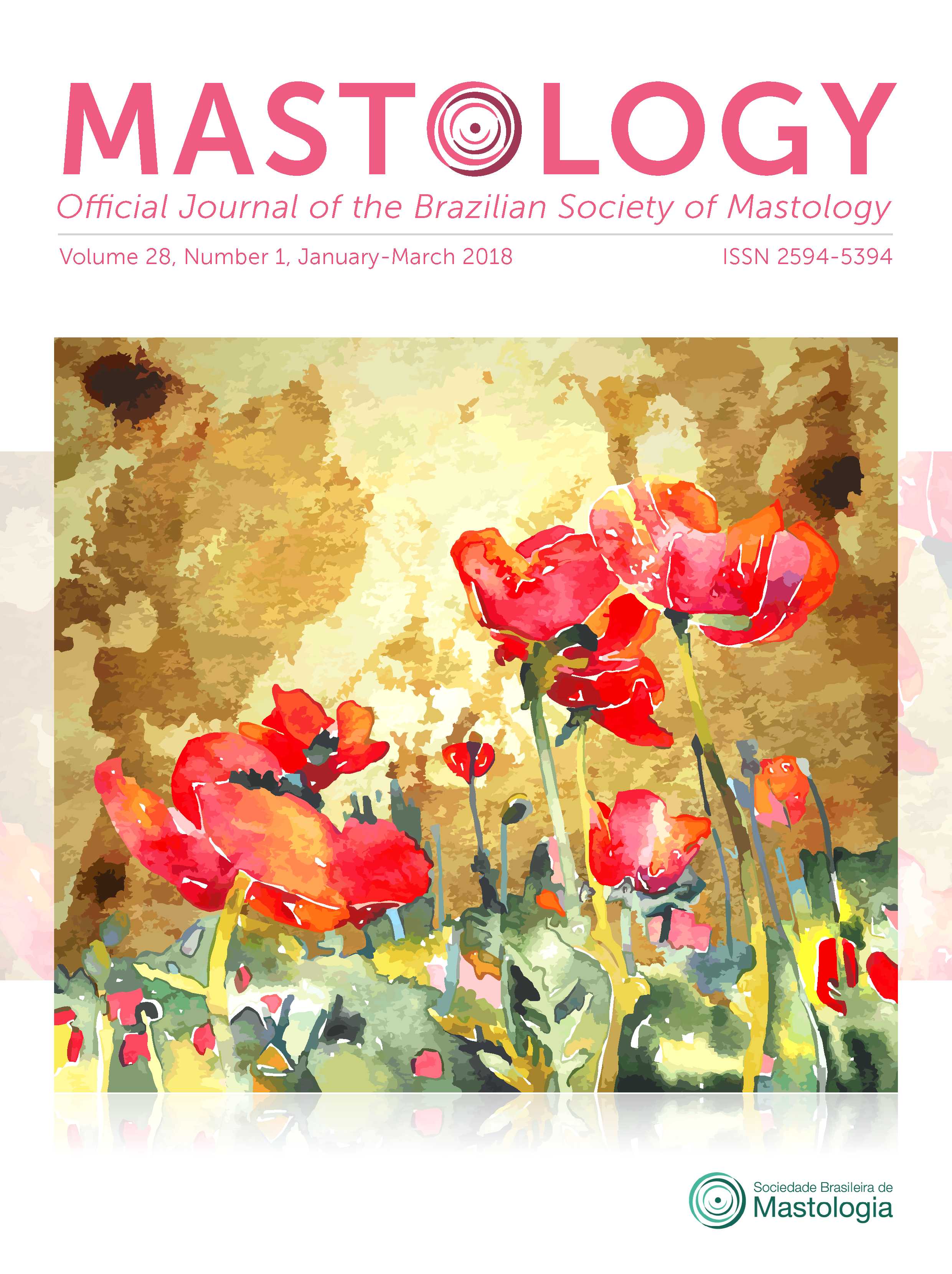CLINICAL AND HISTOPATHOLOGICAL AXILLARY ASSESSMENT
Keywords:
Breast cancer, sentinel lymph node, diagnostic techniques, surgicalAbstract
Introduction: The proper selection of patients for sentinel lymph node biopsy is essential and depends on the evaluation of the patient’s prediction for lymph node involvement and an evaluation of the accuracy of the clinical examination. Objective: This study aimed to evaluate the axillary contents of 102 breast cancer patients with tumors between 3 and 5 centimeters who underwent axillary dissection between January 2010 and December 2013. Methods: The data were categorized according to positive or negative axillary clinical evaluation and positive or negative anatomopathological evaluation. Results: The value for positive predictive values for physical examination was 83.5% and the negative predictive value was 34.88%. In addition, axillary physical examination showed 63.6% sensitivity and 60% specificity. Most patients with axillary involvement in the anatomopathological evaluation correlated with tumor grade, size, location and angiolymphatic invasion. Conclusion: It is believed that a better evaluation of the prediction of lymph node involvement, considering some clinicopathological risk factors in patients with suspicious lymph nodes, should be performed to aid the preoperative study of the axilla and the axillary approach screening.
Downloads
References
Krag DN, Anderson SJ, Julian TB, Brown AM, Harlow SP, Costantino JP, et al. Sentinel-lymph-node resection compared with conventional axillary-lymph-node dissection in clinically node-negative patients
with breast cancer: Overall survival findings from the NSABP B-32 randomised phase 3 trial. Lancet Oncol. 2010;11:927-33.
Mansel RE, Fallowfield L, Kissin M, Goyal A, Newcombe RG, Dixon JM, et al. Randomized multicenter trial of sentinel node biopsy versus standard axillary treatment in operable breast cancer: the ALMANAC Trial. J Natl Cancer Inst. 2006;98:599-609.
Harlow SP, Weaver DL. Management of the regional lymph nodes in breast cancer. UpToDate. 2014.
Specht MC, Fey JV, Borgen PI, Cody HS 3rd. Is the clinically positive axilla in breast cancer really a contraindication to sentinel lymph node biopsy? J Am Coll Surg. 2005;200:10-4.
Lanng C, Hoffmann J, Galatius H, Engel U. Assessment of clinical palpation of the axilla as a criterion for performing the sentinel node procedure in breast cancer. Eur J Surg Oncol. 2007;33:281-4.
Fisher ER, Sass R, Fisher B. Pathologic findings from national surgical adjuvant project for breast cancers (Protocol No.4) Discriminants for tenth year treatment for line. Cancer. 1984;53(3):712-23.
Giuliano A, McCall L, Beitsch P, Whitworth PW, Blumencranz P, Leitch AM, et al. Locoregional recurrence after Sentinel Node dissection with or without axillary dissection in patients with sentinel lymph node metastases: the American College of Surgeons Oncology Group Z 0011 randomized trial. Ann Surg. 2010;252:426-33.
Downloads
Published
How to Cite
Issue
Section
License
Copyright (c) 2018 Diana Taissa Sampaio Marinho Navarro, Manuela Gomes de Aguiar, Marcos Felipe de Oliveira Galvão, Thaís Cristina Oliveira Germano, Tirzah Braz Petta Lajus, Teresa Cristina Andrade de Oliveira

This work is licensed under a Creative Commons Attribution 4.0 International License.







